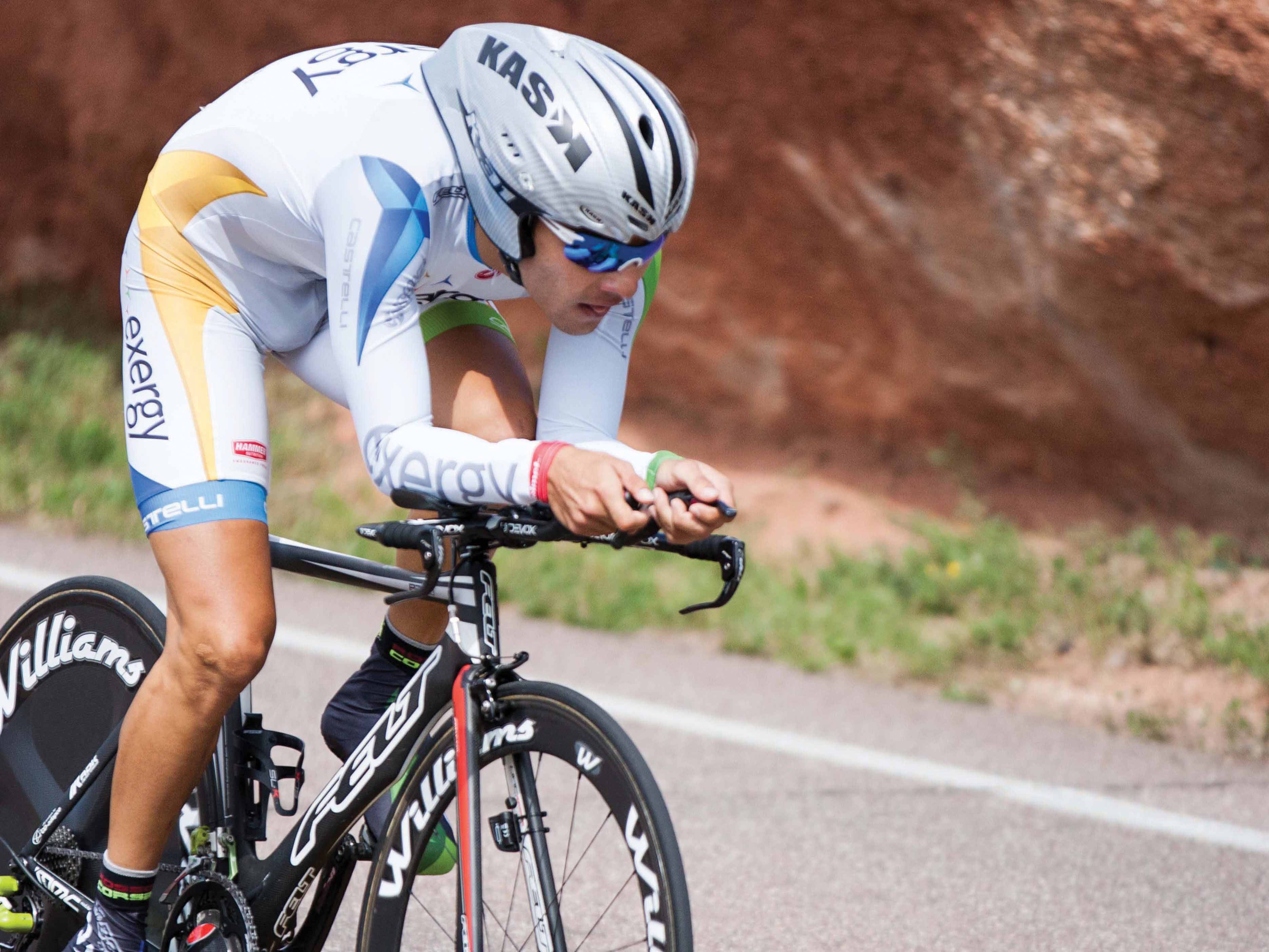The Benefits Of The Time Trial For Triathletes

Photo: Brad Kaminski
Five ways bike time trials can benefit your triathlon racing.
Triathletes may ride time trial bikes and race against the clock, but because we always have a run to do afterwards, we’ll never reach our highest level of effort within a triathlon. But reaching your max sustained effort has a multitude of training benefits, which is why many coaches advocate for time trials.
“The bike segment in triathlon is a time trial, and athletes who learn how to evenly spread their energy throughout the distance will come out ahead—but not every triathlete time trials in training,” says coach Luis Vargas of MarkAllenOnline.
RELATED: The Benefits Of Bike Racing
Similar to the benefits of doing a standalone 5K or 10K for running—benchmarking fitness, predicting goal race pace—cycling time trials can help your training for these reasons:
1. Data gathering in a race setting
Getting your best effort out of an at-home functional threshold test can be daunting, and adding in the race environment can give you that extra level of intensity. “You can get an idea of your one-hour power, or record as many helpful details as you want for 20 or 30 minutes all-out, which you can transfer over to your training,” says Ivan O’Gorman, the lead U.S. bike fitting instructor for Retül.
2. Poor-man’s motorpacing
Professional cyclists use motor pacing for the neuromuscular training effect and pure speed component, but for less experienced riders (and those who don’t have a friend with a scooter), O’Gorman says the mentality of “athlete and machine vs. the clock” is similar in a TT.
3. Dedicated aero practice
It’s easy to fidget and sit upright for a few seconds during training, but, Vargas says, time trials teach you to deal with the discomfort created by riding at race pace and staying in the aerobars the entire time.
4. Realistic race simulation
“Many triathletes ride in groups for safety and comradeship, which adds a lot of fun to training,” Vargas says. “But on race day we are all alone with our bike and need to face the wind without the protection from our training mates.”
5. Mental strength test
The mental side of riding at that steady intensity is just as important as the physical side. Treat a time trial as a practice run for visualization and motivational techniques that you can call upon in your next triathlon.
RELATED: Bike Smarter To Run Stronger
When to time trial
O’Gorman says you can do a TT at any point during your season, just be smart to use it as a form of training and allow for proper recovery. Vargas uses them as a part of race preparation. “Particularly before the first big ‘A’ race of the season when we have forgotten how to pace a race and how to maintain a race pace without drafting a training mate,” Vargas says.
Race Do’s
– “Prepare in training at the proper intensity level so you don’t show up on race day off the back of four weeks of base training and then go all out!” O’Gorman says. “You will crack a lot sooner than you expect.”
– Treat it like a race. Do a complete warm-up with some short efforts at race intensity—either around the course, or go pro and bring your trainer.
– If possible, do a repeatable race or route so you can use your times as a benchmark for progress.
– O’Gorman’s advice for preparing your bike for a TT: Clean off all unnecessary hydration/nutrition accessories, leave the (heavy) flat repair kit behind, cover up as much skin as possible, don’t wear baggy clothing and get your tire pressure right to reduce rolling resistance.
Find One!
– Check your state cycling organization’s websites or your favorite bike shop for local time trials, which are often just advertised via flyer
– Consult your local cycling or triathlon club to see if they have weekly informal options
– Create your own with friends: Find/create a 10-mile loop with all right turns and no stoplights. Space everyone out in one-minute intervals.